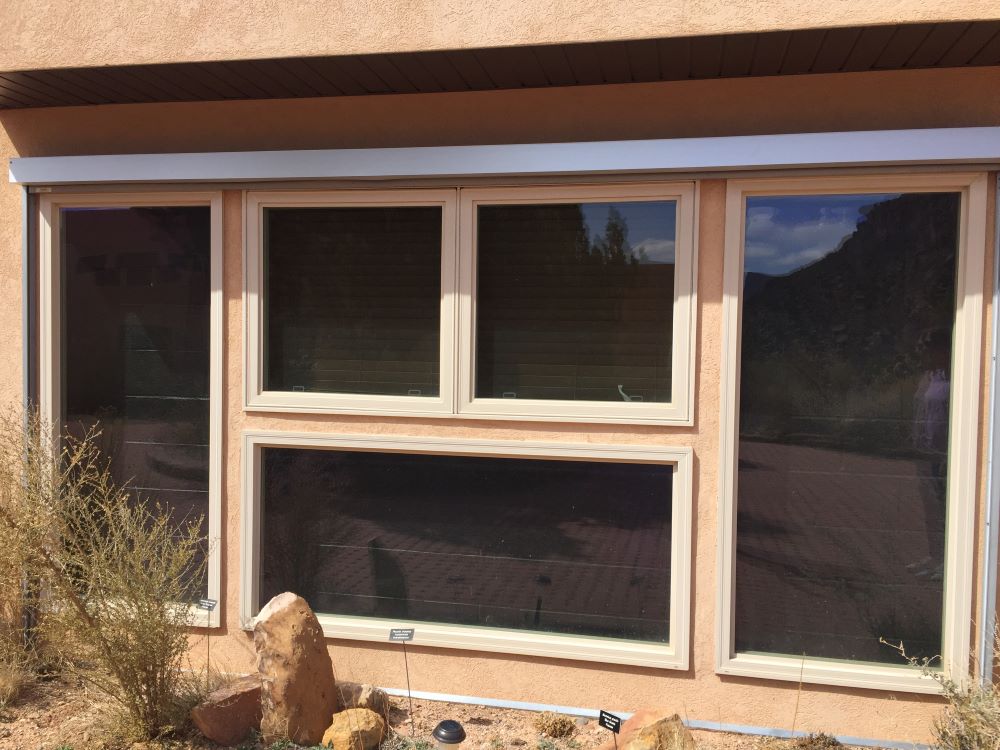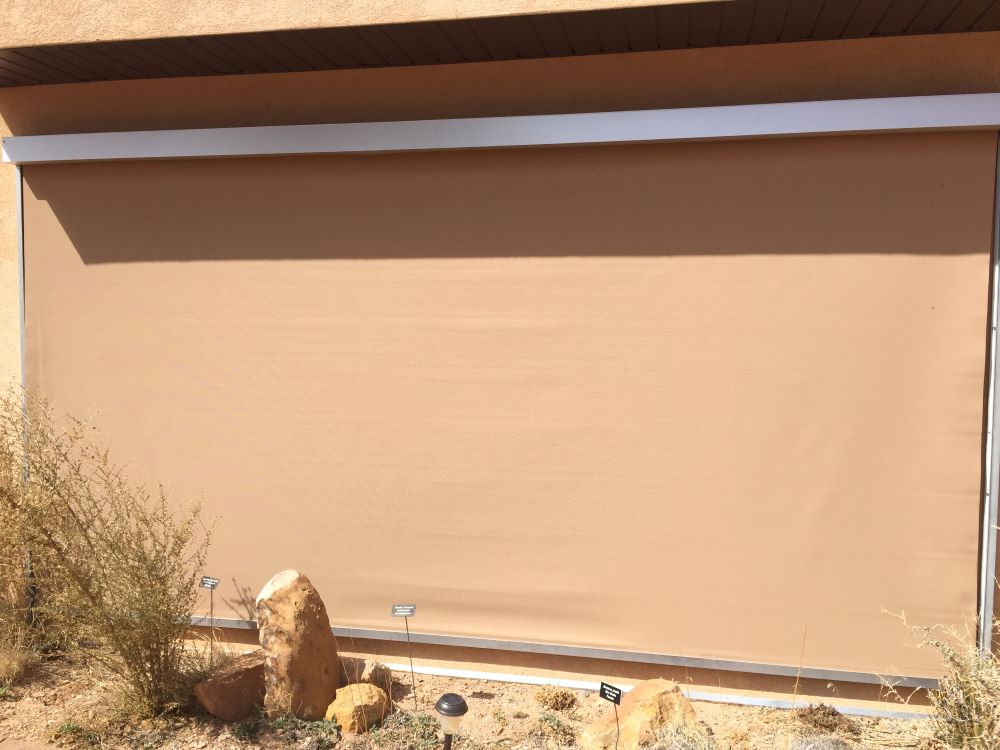Heating & Cooling at the Field Station
The field station uses passive techniques and good design to reduce heating and cooling requirements.
The field station is equipped with trombe walls which capture/release energy depending on the season. These walls face south and are painted black. They are covered with a pane of glass which creates an air pocket between the wall and the glass. During the winter, these walls heat up and that heat radiates into the building all day and well into the night. During the summer, those walls can be covered with a blind to reduce heat absorption during the day, and then uncovered at night when the heat from the building radiates out into the environment.
In addition, the field station is equipped with cooling towers that help cool the buildings in the summer. These towers create a convective current in which hot air rises up and out the tower drawing cooler air up from the ground. Effective insulation, tight seals around doors and windows, and white roofs that reflect sunlight also contribute to a reduced need for heating and cooling.



